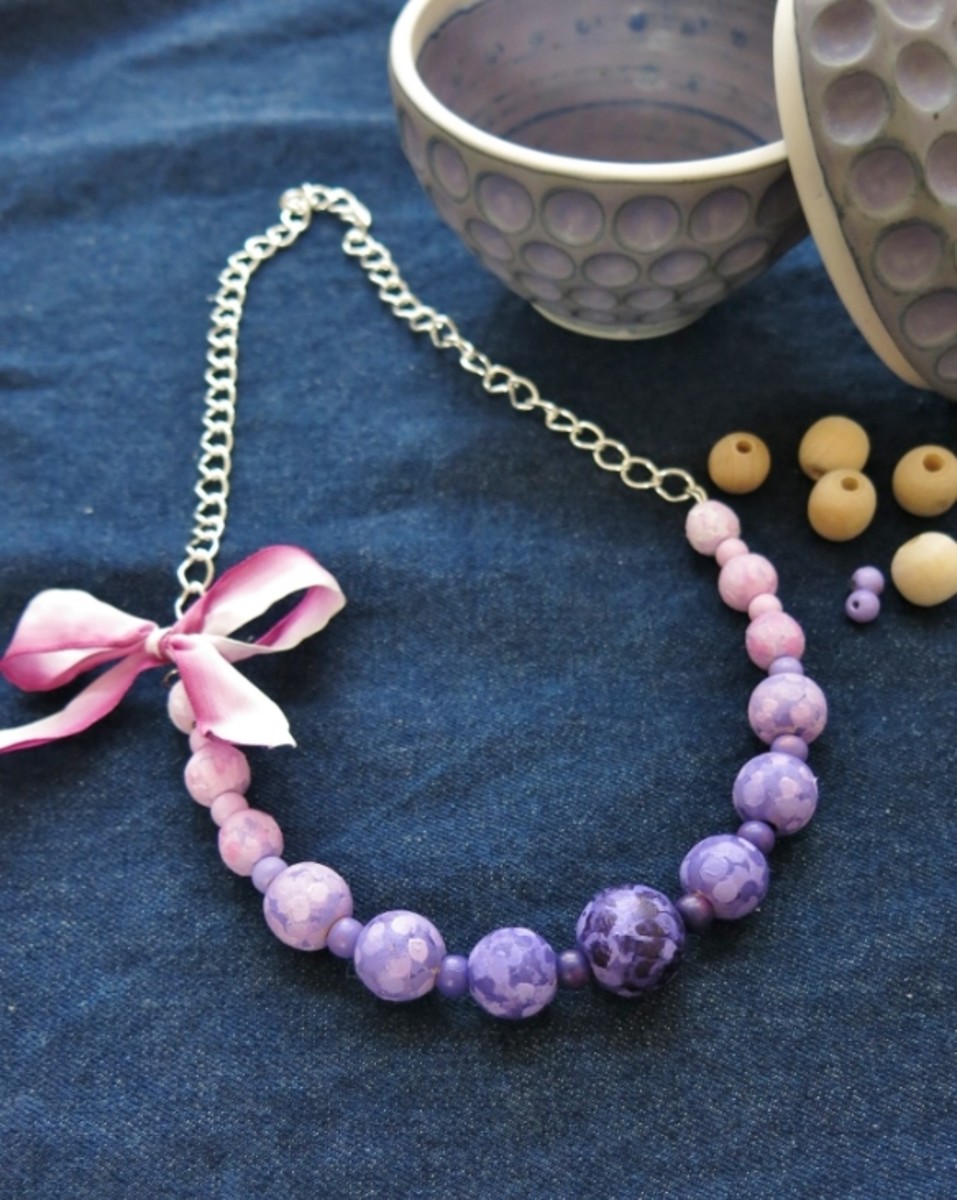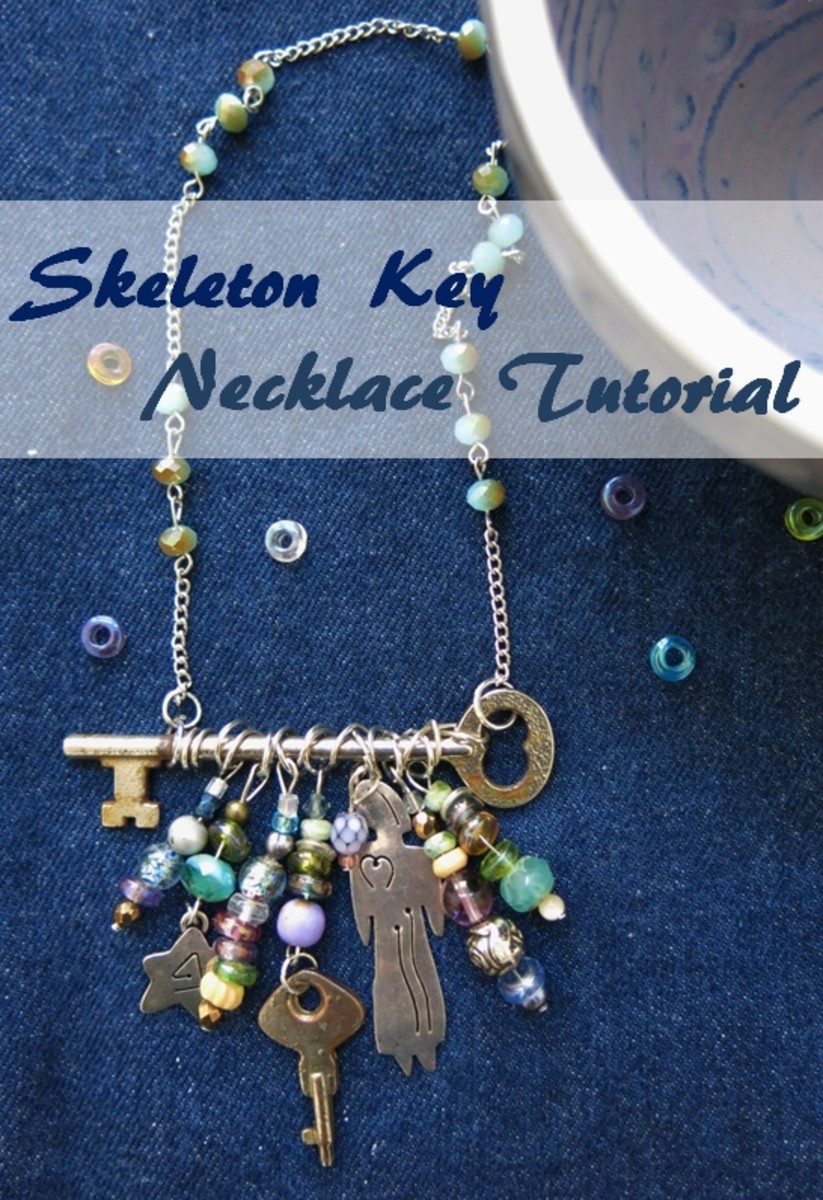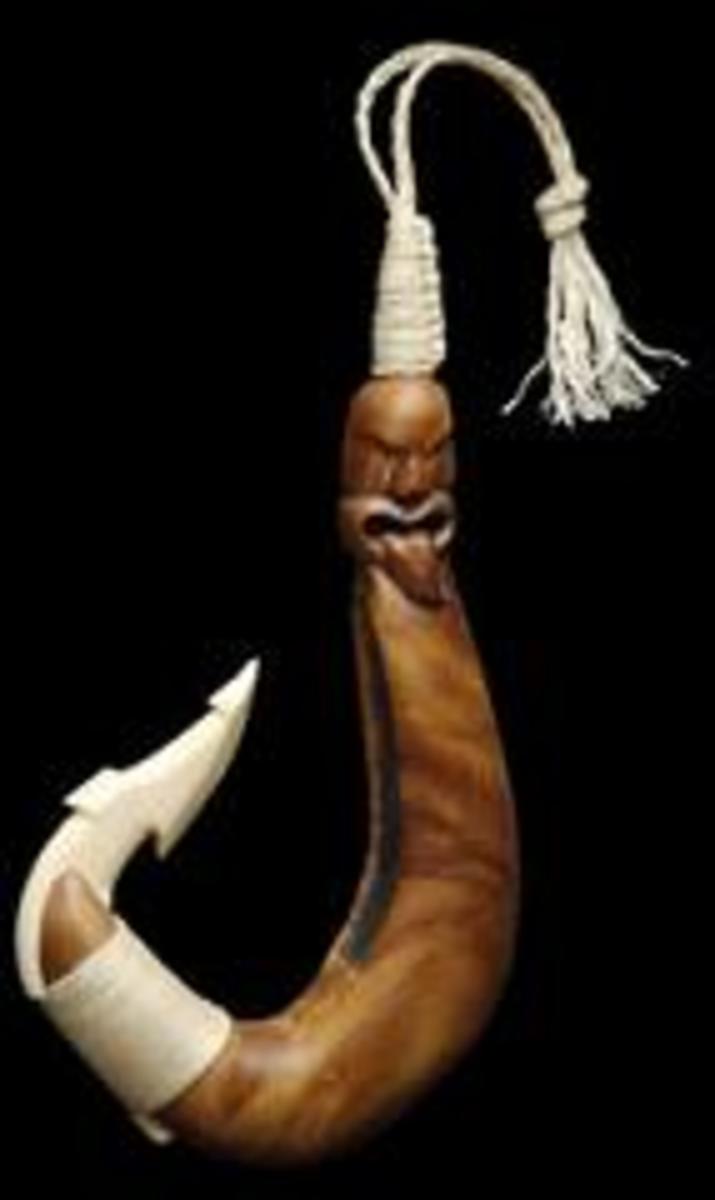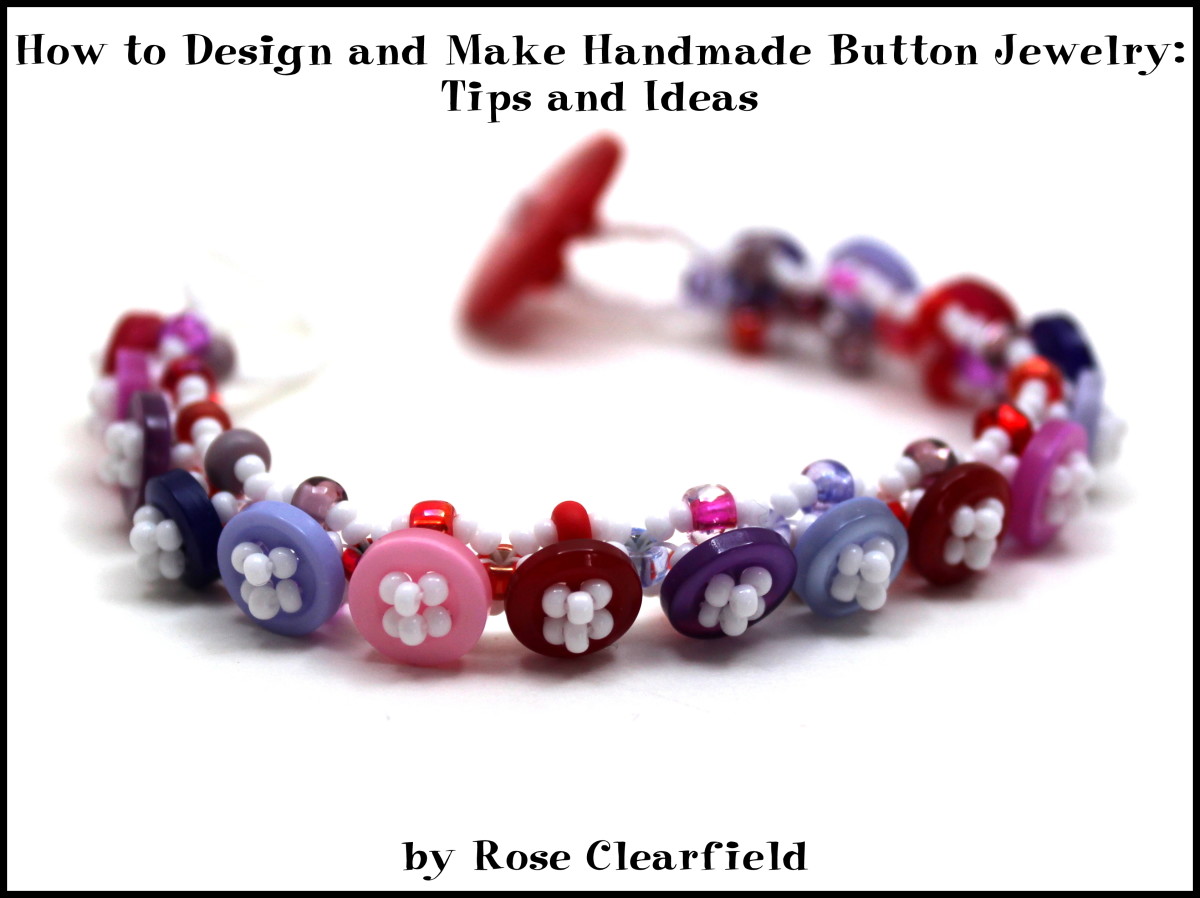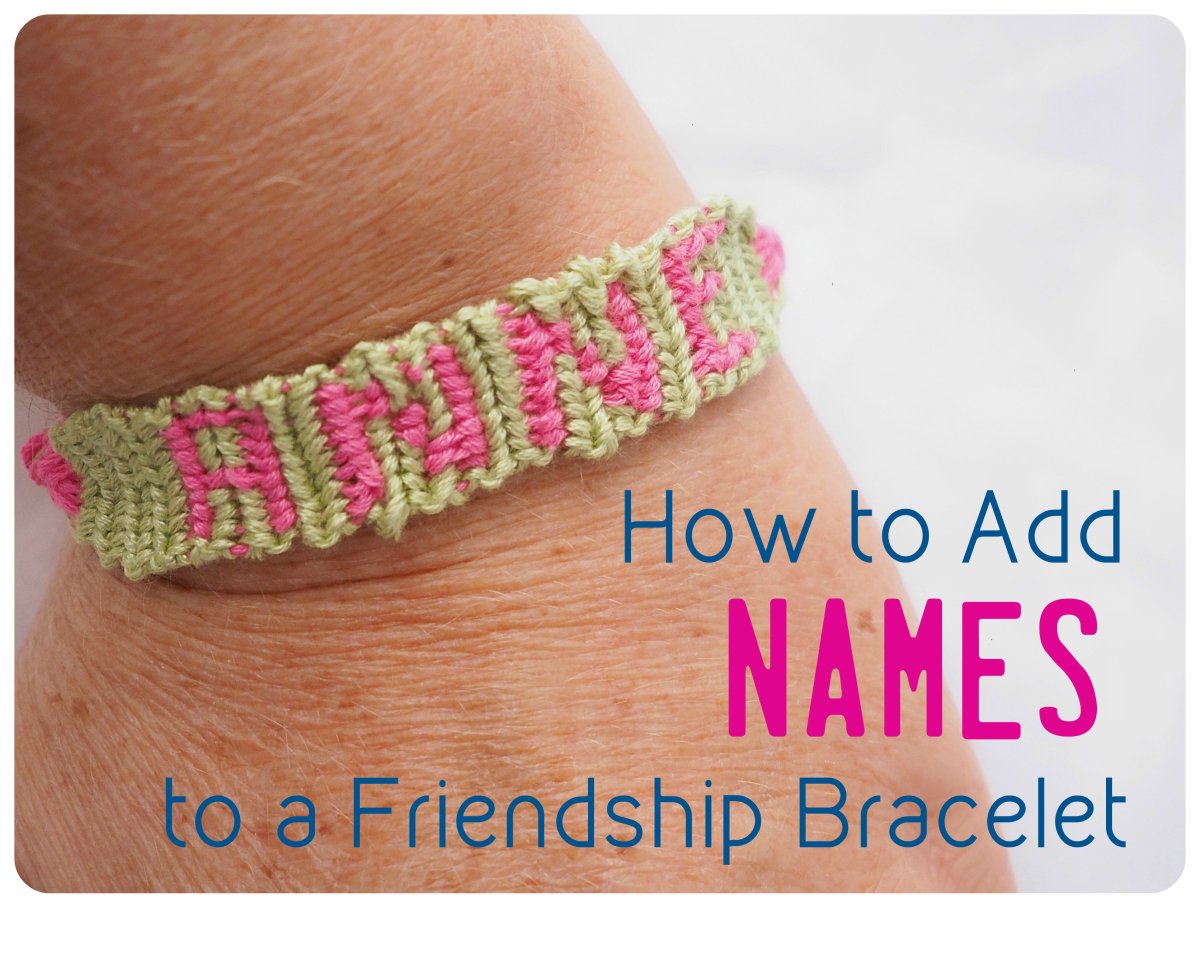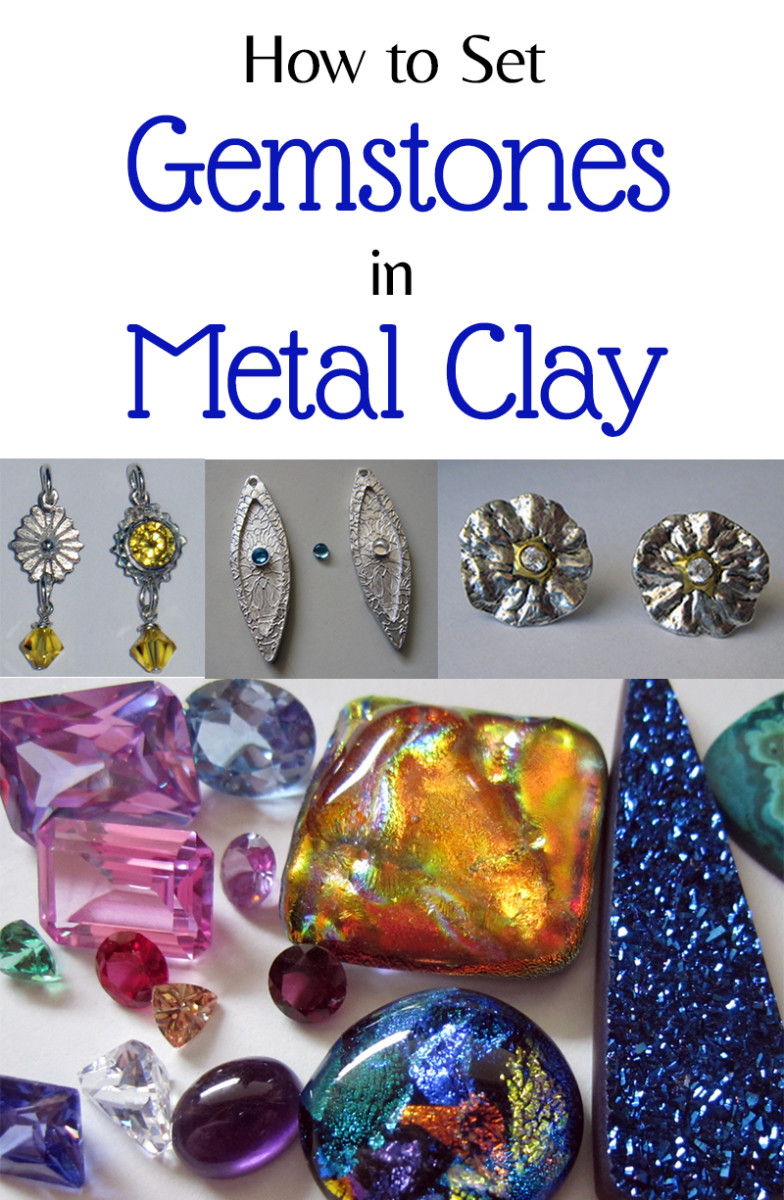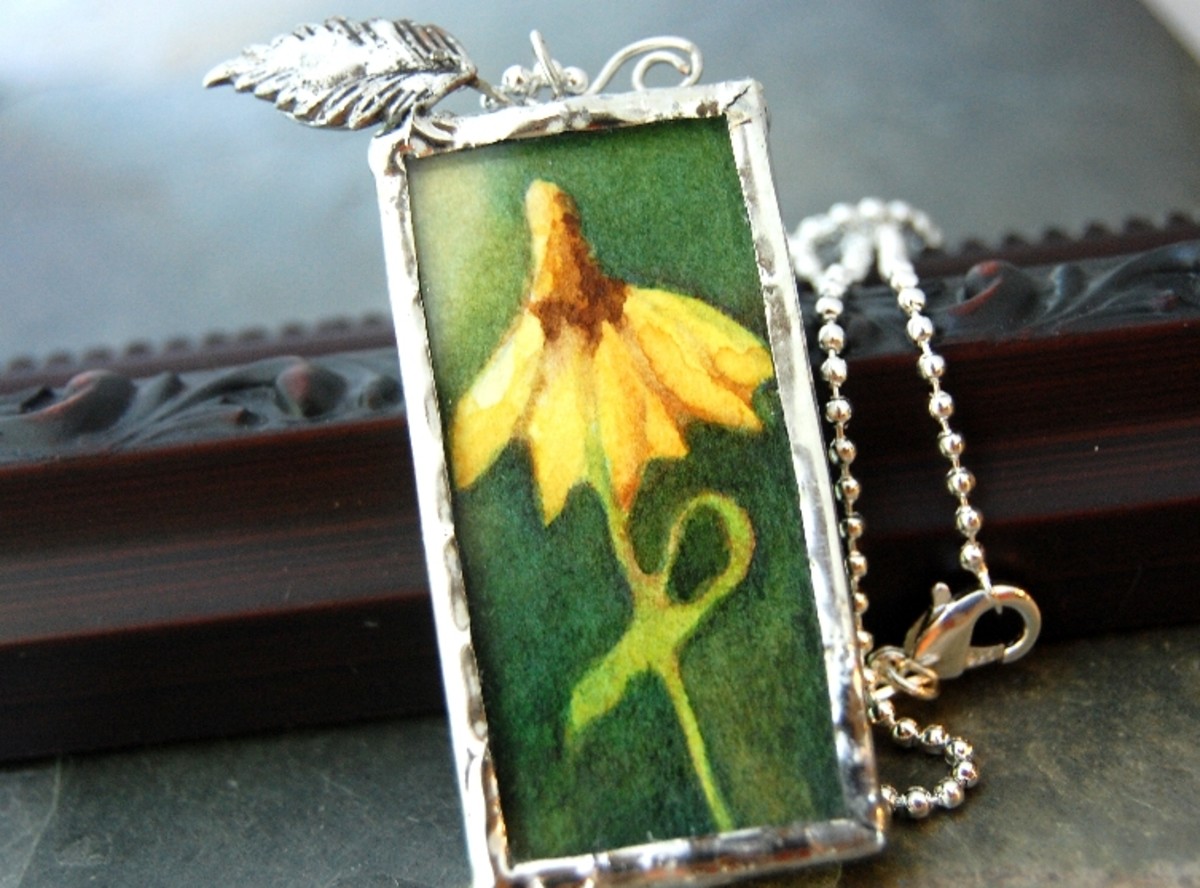How To Make A Fish Hook Necklace Clasp
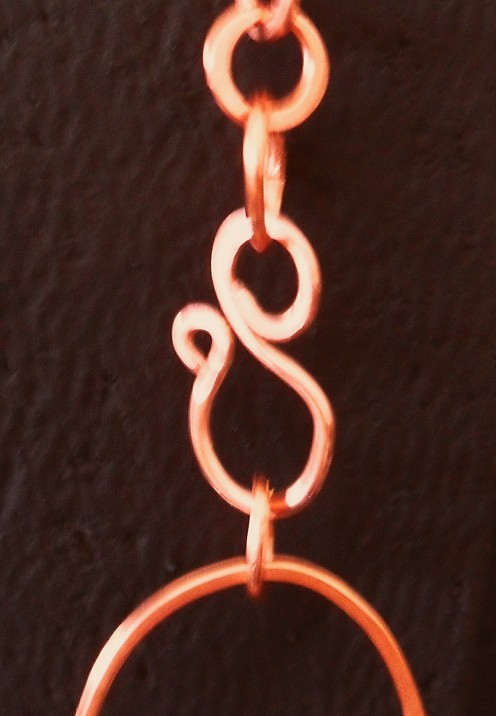
Fish Hook Clasps For Handcrafted Necklace Jewelry
You can make a simple clasp for your handcrafted necklace that will match your design and blend with the overall appearance. This type of clasp is relatively easy and is a nice addition to the finished necklace. Fish hook clasps are good for necklaces because they are easy to hook and remove. I would not generally suggest using the fish hook clasp for a bracelet because they might come detached with the extra arm movement that a bracelet endures compared to a necklace. Try making this fish hook clasp the next time you would like a clasp that can handcraft for your jewelry necklace.
Tools and Materials For A Fish Hook Clasp
- Wire.. for this example 18GA copper was used to match this sample copper chain necklace.
- Round nosed pliers
- Straight wire cutters
- Flat jewelers file
- A ruler
- An anvil
- A small hammer
Adjust Tools And Supplies For A Specific Necklace
The list above is intended for the sample fish hook clasp that is made in the video. This list should be adjusted to suit the needs of any specific necklace jewelry design where it is desired to create a fish hook clasp that will match the necklace it is intended for. That means using a complimentary wire that the necklace design already has in it. If there is no wire in the design it is still possible to use a fish hook clasp to finish the necklace. Use a wire that will adorn the necklace design. Same thing with the tools you will use. Different tools will do different jobs. It might be necessary to use additional tools or less tools.
There are other elements within the necklace you are working on that can help you in making a decision of what kind of wire to use. Look at the structure of the necklace. How is it put together? What other jewelry elements are being used? Ask yourself these questions in relation to making your decision.
This Sample Fish Hook
The end loop on the fish hook clasp is hammered because the links in the necklace are hammered and that carries the design elements. You may not need to be hammering on a delicate gold necklace so you have to think about what you would like to achieve with the fish hook clasp you will make. Also the wire is a heavier, 18Ga wire used in this sample. This is because the links are large and bulky. I wanted to carry that same design element in to the fish hook clasp to finish this particular necklace jewelry. The wire is copper because the necklace jewelry is copper. These are all things to consider when you make a finished fish hook clasp.
Sizing A Fish Hook Clasp
How big or small the fish hook clasp you make will also depend on the style of the necklace the finished clasp is intended for. There could be a need to make the clasp very large if you would like the clasp to be a part of the finished design. All necklaces do not necessarily have to hook at the back of the neck. Keep this in mind. It may be that you would like to clasp the necklace just up from a pendant. This is where you might prefer to make a fancier clasp that joins in the main part of the necklace design. There are many different kinds of jewelry clasps so you might also like to take a look at other styles before you start.
C.S. Demonstrates Making A Fish Hook Clasp For A Handcrafted Necklace
Make A Fish Hook Clasp Step By Step Instruction
- Measure a small length of wire to use for the clasp.....For the sample I used a 2 1/2" piece of 18GA copper wire. This will yield a finished fish hook clasp that is designed for my handcrafted copper chain necklace.
- Cut the wire to the desired length....As shown in the video, use flat cutters to remove the needed length. It is best to cut the wire a little too long if you are unsure of the exact length wanted. The last curve made can be trimmed when you get to that point.
- File the cut ends....You want to have a nice finished appearance so run the file over the ends to remove any burs or sharp edges.
- Grasp one end of the wire with round nose pliers....This first bend will become the loop for the hook to be attached to the chain. The size of the first loop will depend on the overall size of the finished fish hook clasp. For this sample a 6mm x 5mm slightly oval loop was formed.The loop is created so that the total length of the loop is a little longer than the width, thus creating an oval shape.
- Work the wire past the oval loop....You can use your fingers to gently bend the wire in the opposite direction after you pass the first loop made. This is where the hook will be created as you pass the loop let the wire flow to the desired length gradually bending the final end in to a hook shape. The sample hook is large, measuring a total of 20mm. I made the hook part of the clasp about 10mm. Don't be afraid to use your ruler as you bend the wire. This might help you keep the hook proportioned at the size you want.
- Finish the hook end....For the sample fish hook clasp i fashioned a very small scroll like loop on the finished end. This will be the end that goes through the ring on the attaching end of the chain. I like using a small scroll loop because it is nice and smooth, easy to grip between the fingers and a durable design. Here is where you might need to trim any excess wire from the end if the piece of wire is too long. Remove a small amount by using your flat or flush cut, straight wire cutters.
- Hammer the looped ends.... This step might not be needed for the clasp you make. It was a part of the original design for this sample clasp so i wanted to carry the technique through to match the handcrafted chain. In the video I am actually holding the anvil in one hand and hammering with the other. I only needed a few taps with the hammer to flattened the loops just a bit. It would be best to have the anvil anchored on a table. I did it this way just for this video. Do Not over hammer as this will cause the finished fish hook clasp to become too brittle and with that it could possibly break. Just hammer enough to flatten the loops just a bit.
- Make minor adjustments with the round nose pliers... The last thing you will need to do is make sure the finished fish hook clasp is lined up nice and flat. The hammering might knock the loops open and they must be closed when attaching the hook to the necklace. This is where the hook is secured to a ring at the end of a chain. All loops used to secure the hook must be closed tight.
- Attach the finished fish hook clasp to the necklace....Use a jump ring to secure the finished fish hook clasp to your necklace. You can make your own jump rings so they will match the overall design of the necklace you are working on. For this sample I used copper wire and slightly flattened the jump ring to match everything else.
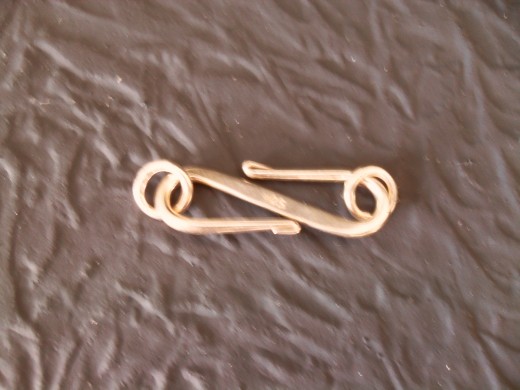
Make A Fish Hook Necklace Clasp For Your Handcrafted Jewelry
It might take you a few different attempts to produce a fish hook clasp that is pleasing to the eye. That is fine. If you want you can practice on some less expensive wire. This is highly suggested if the finished product is going to be made from a precious metal like sterling silver or gold. Make a few samples until you feel comfortable with doing the final finished fish hook clasp.
Take a look at the picture above. This was included to support the fact that a fish hook can be made in many different styles. The sleek element of the fish hook clasp in this photo is a perfect example. I would also suggest that a sketch of what you would like the finished fish hook clasp to look like is by all means a great way to go. By making a sketch you have the lines to follow when you start bending the wire. If the sketch is done to exact size then the measurements can be taken from the sketch allowing the beginner to know exactly how much wire to cut and where to make the bends.
No matter how you approach making your own fish hook clasp it is well worth the effort. The actual time involved to make a handcrafted fish hook clasp for your jewelry necklace is a matter of a few minutes. It saves money and will make your finished necklace most unique.

